Laura MacDonald, CFRE
Principal & Founder
Prepare for changing donor behavior
The new tax law that was adopted on July 4, 2025, will have a significant impact on charitable giving. Most provisions will take effect on January 1, 2026. It is important for every nonprofit organization to understand how these changes will affect donors, and talk with them now to prepare. For high-net-worth donors and corporations, it may mean accelerated giving in 2025, while “everyday donors” might want to wait until 2026 to make charitable gifts. Read on to learn what is changing, followed by specific guidance on how you and your donors might adapt.
Tax changes for high-net-worth households
Who it affects: Any individual or household that itemizes deductions (which include state and local taxes, mortgage interest, and charitable gifts). This affects primarily high earners (starting at around $250,000 adjusted gross income) as well as many small business owners. These are sometimes called “high-net-worth” (HNW) households, especially if they also hold significant assets (>$1 million in addition to the primary residence).
What is changing: The new tax code introduces a 0.5% floor on charitable deductions for itemizers. As a result, someone with $500,000 in adjusted gross income cannot deduct the first $2,500 of charitable gifts. It also caps the deduction at $0.35 for each dollar of itemized deductions, even for taxpayers in the highest 37% tax bracket (singles with >$626K adjusted gross income, couples earning $751K or more).
What it means: More donors are likely to take advantage of a strategy sometimes called “bunching” or “bundling.” They will consolidate several years of giving into a single year—diminishing the impact of the AGI floor and deduction cap—often utilizing a Donor-Advised Fund (DAF). They’ll fuel their giving with appreciated noncash assets, like stocks, real estate, cryptocurrency, and artwork. Donors may accelerate their giving in 2025 to get ahead of these changes.
Tax changes for “everyday” donors
Who it affects: “Everyday” households—typically with income <$250,000—who utilize the “standard deduction” ($15,750 per individual or $31,500 per household in 2025) instead of adding up separate deductions for things like state and local taxes or mortgage interest.
What is changing: These donors will now be able to also deduct charitable giving, even if they take the standard deduction. This deduction is capped at $1,000 for single filers or $2,000 for joint filers. Some donations are ineligible for the deduction (e.g., to DAFs or private non-operating foundations).
What it means: These donors may decide to delay their giving until 2026. Some HNW households may also elect to take advantage of this provision in the years that they do not itemize (i.e. “bunch”) their deductions.
For all donors
Two changes that were adopted in previous revisions of the tax code have been made permanent.
Qualifying charitable distributions from retirement assets will continue to be popular for those age 70.5 or older. Some may opt to take advantage of the one-time option to use up to $54,000 to fund a split-interest gift like a charitable gift annuity.
The estate and gift tax exemption will be $15 million in 2026, indexed for inflation each year thereafter, permitting a total $30 million exemption available to married individuals in 2026. As a result, donors may give more to individuals—and not charity—through current gifts or bequests and incur no gift or estate tax. However, according to The Columbus Foundation, “donors continue to leave legacy gifts for charitable purposes under their estate plans…because many donors are driven by their values—specifically, their charitable desires—when planning their legacies.”
How advancement and development teams can prepare
Look through your donor data to determine the best approach for various types of donors. Remember that screening isn’t perfect and donors’ circumstances can change—so use caution and don’t make assumptions. However, based on past giving behavior and a donor’s relationship with the organization, the following tactics may be appropriate.
- Identify any donors who are in the midst of a multi-year pledge. These donors may wish to accelerate their pledge payments.
- Identify donors who typically make major gifts (as defined by your organization) in the first six months of the calendar year. You may want to reach out and let them know that it could be advantageous for them to give before the end of the year. Do the same for any lapsed major donors.
- Look for donors who have a history of making gifts via Qualified Charitable Distributions (QCDs), appreciated assets and/or through DAFs. Encourage them to consult with their financial advisors about the benefits of increasing and accelerating their giving this year.
- Is your organization planning a year-end appeal that is largely directed to “everyday donor” households? If so, you may want to extend the response period into January so that they can take advantage of the new universal tax deduction.
- How many of your “everyday donors” have reached age 65? These donors may benefit from the “supersized” senior tax deduction, starting with their 2025 taxes. Just as many financially comfortable donors used their COVID relief to fuel charitable giving in 2020 and 2021, this benefit (up to $6,000) may be a source for charitable giving now until it expires in 2028 (i.e., the end of the Trump presidency).
Sample language
This can be adapted for your various platforms, or for talking points that your team members can use when talking with supporters.
For major donors
- Are you familiar with the changes to the tax code that may affect your charitable gifts?
- Some donors will benefit by accelerating their charitable giving in 2025, rather than waiting until the new tax policies take effect in 2026. Would you like to talk about your situation?
- I know that you typically give through [a QCD/a DAF/shares of stock]. Other donors have found that the new tax code is prompting them to increase their use of these giving strategies.
For “everyday” donors
- You may be able to take advantage of a new universal tax deduction starting in January 2026. Please let us know if you’d like to shift your year-end gift into the coming year.
- Thank you for being a monthly sustaining donor. Some of our supporters have found that the new universal tax deduction allows them to give more, starting in 2026. Please let us know if you’d like to explore your options.
For donors age 65+
Consider featuring a donor who used the senior tax deduction to fuel their giving. Use platforms like social media, email, and newsletters to tell their story. The best candidates might include former board members or other loyal volunteers. March or April of 2026 could be good timing, since that’s when many seniors will learn of the deduction as they fill out their tax returns.
Beyond tactics
These changes may affect the timing and terms of donor behavior, but they don’t affect the underlying generosity that is at the root of philanthropy. So while there may be some temporary gyrations at the end of 2025 and beginning of 2026, it is likely that giving will continue to be resilient.
Tax policy is just one of the changes that donors must consider. There are new asset classes to fuel giving, such as cryptocurrencies. New causes can capture attention. And new generations will begin to come into wealth that will allow them to give more than ever. Fundraising professionals must learn to adapt to these changes, shifting from a transactional mindset of pursuing gifts to a relationship-based mindset that positions them as advisors to their donors. This can increase the fulfillment of both career fundraisers and generous donors: a virtuous cycle that will elevate generosity.
Citations
James, R. (2025, July 25). How the 2025 charitable tax law changes boost the value of bunching and Dafs. How the 2025 Charitable Tax Law Changes Boost the Value of Bunching and DAFs. https://www.linkedin.com/pulse/how-2025-charitable-tax-law-changes-boost-value-dafs-russell-jqdqc/?trackingId=7riUN3vVSLeev1N7y9FgNQ%3D%3D
The Columbus Foundation. (n.d.). Important Tax Law Changes. https://www.columbusfoundation.org/charitable-insights/important-tax-law-changes
Note that this does not constitute formal legal or financial advice. Organizations should always encourage (or even require) donors to consult with their advisors to determine the best course of action.
A version of this article was originally published by Forbes.com, which can be found here.





